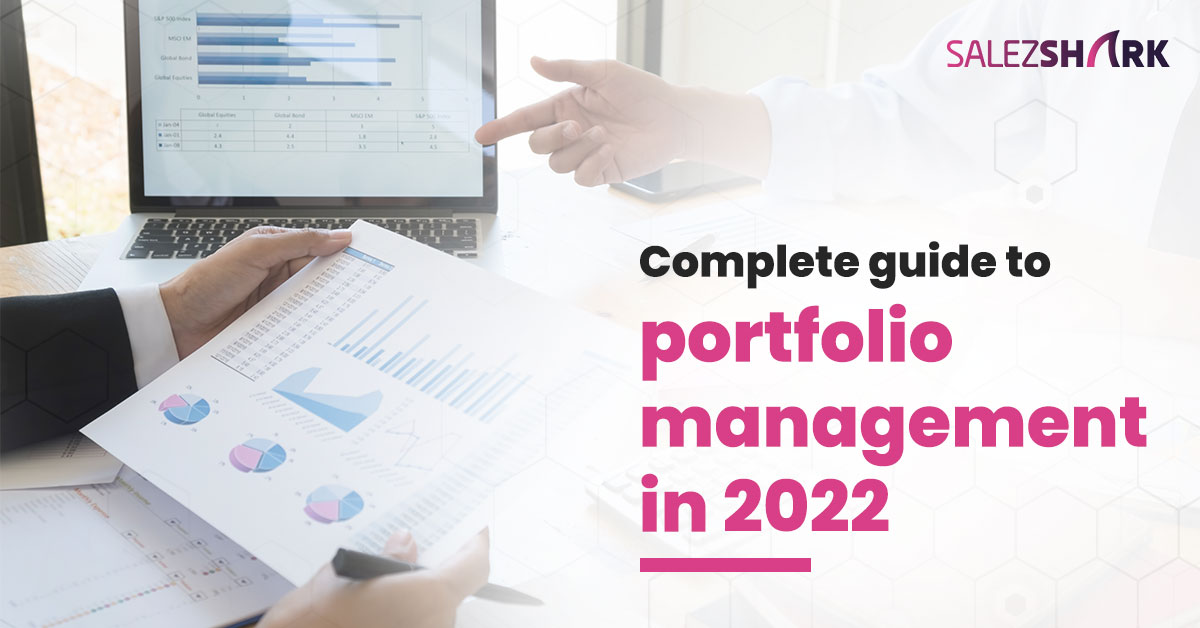To execute projects and scale-up, an organization needs portfolio management, which means using the right technology and right people to execute the projects. The standard definition of portfolio management states it to be a way to reduce the gap between the strategy and implementation. Every company present in the market needs to develop efficient strategies and action plans to generate great results. For this, they need a combination of proper tools, techniques, and professionals. Portfolio management is also an essential concept among these.

What is Portfolio Management?
Organizations take various projects, which technically is known as Portfolio. Companies have to develop strategies to manage these projects and increase the organization’s ROI. The process of Portfolio Management involves the selection, prioritization, and control of these projects through centralized management systems.
When a project delivers more with long-term goals is high on priority lists as it is more likely to get funds. On the other hand, underperforming projects are always kept at the bottom line. Portfolio management helps organizations make more informed and data-driven decisions, which allows you effectively deliver the projects.
What does the Portfolio Manager do?
The role and responsibility of the portfolio manager are very vast as he has to monitor all the projects running in the organization. Apart from this, it is his responsibility to check all the internal and external factors affecting business operations. The portfolio manager is also responsible for developing the organization’s planning to achieve its objectives and goals.
It would not be wrong if we would, say that a portfolio manager controls the process of the projects. He must analyze every project portfolio individually to generate more business for the company. It is also he who decides what resources are to be allocated and what deadline to be achieved. How much expenses to be done in a project so that it remains beneficial for the organizations.
Process
Portfolio Management consists of the following four important processes.
Setting Goals
The first step in effective portfolio management is to set goals. It is in this step only you will have to calculate your investment.
Figuring out how much help you want
Suppose you think that you can handle projects on your own, then it’s a good thing, and you are all ready to go. But if you feel that handling the project is a bit complex and requires help from professionals, you can seek help from a professional portfolio manager and let him handle the same on your behalf.
Timeline Mapping
This is a crucial step in the portfolio management process. In this step, you will calculate the exact time when you will need the investment. You can select flexible plans for your projects. There are three types of programs available: short-term, intermediate, and long-term objectives.
If your investment is less than three years, it falls under short-term goals. If the investment is between three to ten years, it is the intermediate plan. If you need investment for more than ten years, it is a long-term plan.
Tolerance for risk
Whatever do you do? There will always be risks involved with business and investment. If you want to succeed, you will have to take risks. The more the risk you take, the more opportunity you earn. There will be times when things will not go as per your plans, but you need to be smart with your decisions.
Conclusion
Portfolio management for any organization is highly effective and efficient. The only thing is that you need to be serious and committed to driving results.
Let SalezShark CRM software help your business that results in reduced operational costs, better client retention & improved productivity with AI-driven sales automation platform. Contact us to know more about SalezShark and receive CRM advice from our expert consultants
